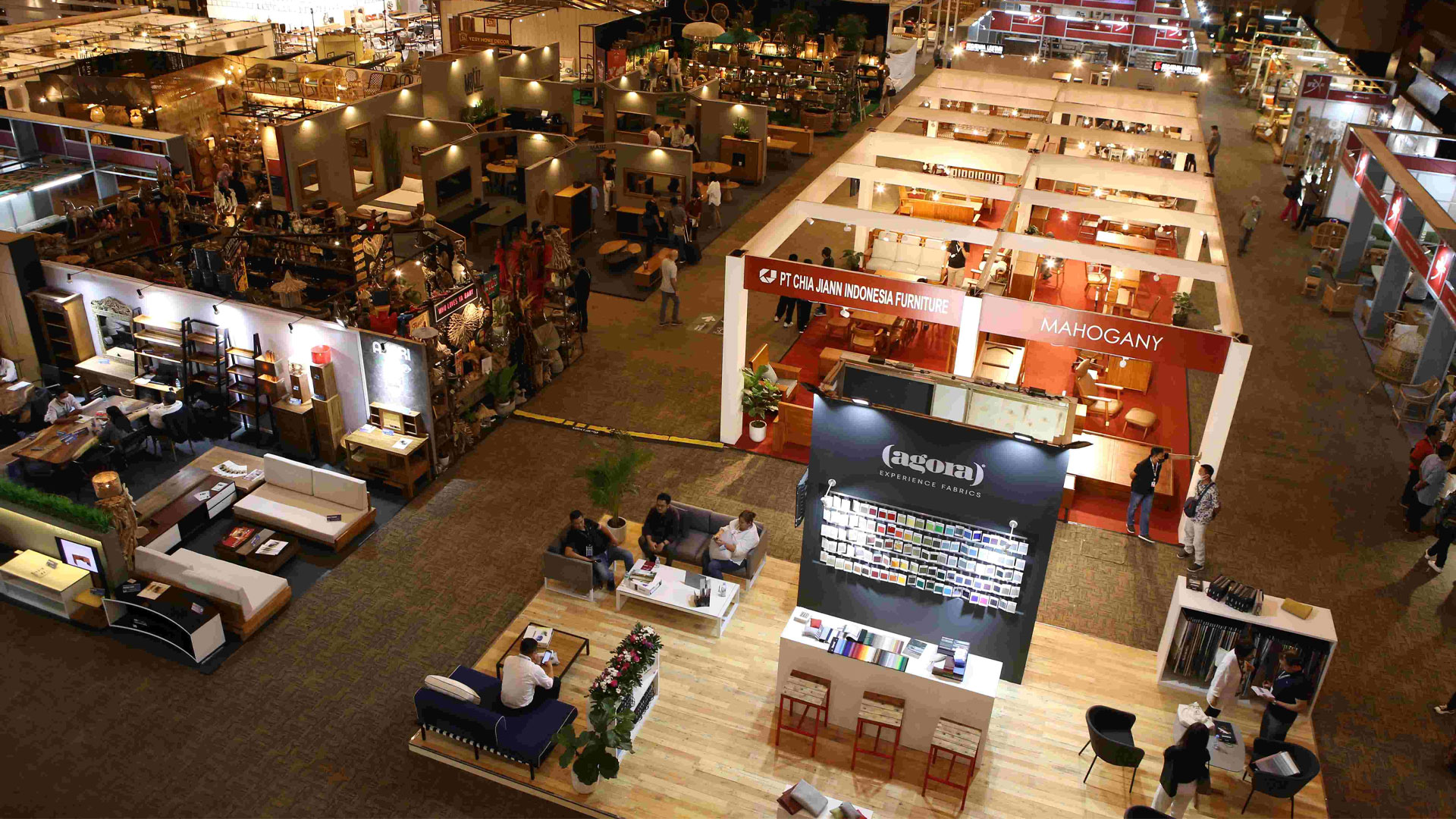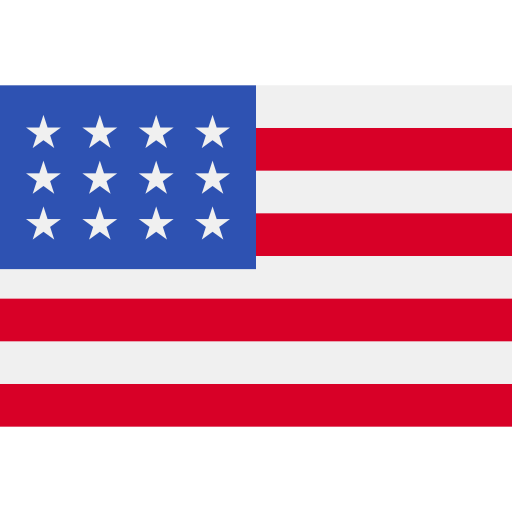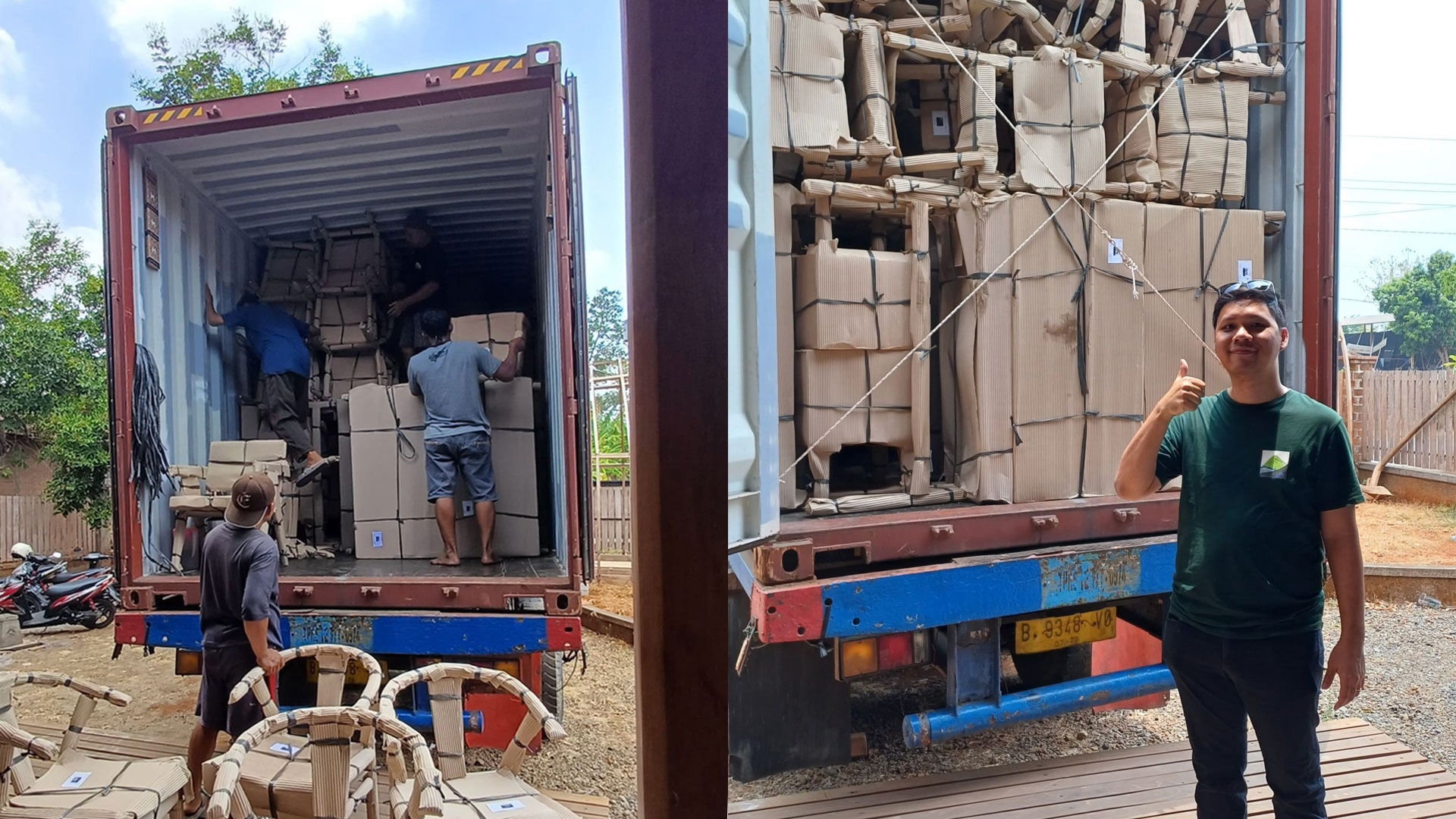This article contains information about importing furniture from Indonesia. In this context, we share from a buyer’s perspective who has collaborated with us.
This article will certainly help you when you want to start a furniture business in your country but need more information about furniture suppliers worldwide, especially Indonesia, which is a well-known producer of wooden and rattan furniture.
Get your coffee and your intention ready because the information in this article is quite lengthy and will tire you out while reading it 🙂
Why Import Furniture from Indonesia?
Before we delve into practical explanations, we want you to understand the reasons why you should import furniture from Indonesia. As reported in various media and data, Indonesia is the largest furniture exporter in the category of solid wood and rattan.
The demand for woods such as teak, mahogany, oak, trembesi, and others makes this category of furniture popular in the US, Europe, and the Middle East.
High-Quality Craftsmanship
The most important factor is human resources. Indonesia is renowned for the quality of its wood and rattan craftsmen. A well-known example is the city of Jepara in Central Java, Indonesia.
This city has been famous for generations for its quality wood craftsmen, including carving, construction, and their ability to process raw wood into high-quality furniture. They all work with their artistic skills and handmade techniques, resulting in furniture that meets both functional and aesthetic needs.
In addition to Jepara, Indonesia has many other cities that focus on furniture and handicraft production, such as Cirebon, Bali, Solo, and Yogyakarta.
Sustainable and Eco-Friendly Practices
Indonesia is highly focused on preserving nature. To inform you, Indonesia is a country with a fairly vast forest area. Some parts of the forest are also utilized as production forests by the government to prevent deforestation.
Government companies like PERHUTANI supply high-quality wood to be used for various needs, including paper, construction materials, furniture, and more.
For example, to trace the source of the wood, the government has launched SVLK (Sustainable and Eco-Friendly Practices), allowing the wood used for various needs to be traced for its source and usage.
Several companies in Indonesia also have FSC (Forest Stewardship Council) certification to meet the standards required by various parties.
Competitive Pricing
Because natural resources are protected by the government and regulated according to applicable regulations, especially with the prohibition against exporting raw materials like wood, these materials must first be processed in Indonesia.
This can certainly benefit Indonesia in competing with other countries. In addition to saving on logistics costs, the supply of wood and rattan materials can reach the factories or craftsmen of furniture and handicrafts in Indonesia directly.
Types of Furniture Exported from Indonesia
So, what types of furniture can you import from Indonesia? In this context, we will only explain the furniture that we can produce internally.
There are, of course, many other furniture manufacturers in Indonesia that can create various types, such as upholstery, indoor furniture, and outdoor furniture with different materials.
Solid Wood Furniture
As we discussed earlier, with Indonesia’s rich natural resources regulated by the government, the production of forests results like teak, mahogany, trembesi, and oak become the mainstay in furniture manufacturing.
In addition to the fact that solid wood is very durable against weather conditions, it can also be transformed into highly aesthetic furniture.
You can browse our catalog page to see many beautiful furniture designs. You can also search on sites like Pinterest for inspiration on furniture made from solid wood, such as teak and mahogany.
Rattan Furniture
Rattan material is also abundant in Indonesia. Various types of rattan are produced in several products such as room dividers, furniture, ceilings, bags, and other handicrafts.
One of the largest rattan furniture-producing cities in Indonesia is Cirebon. Besides having many weaving artisans, there are also many international-scale manufacturers there. Some are also located in Jepara, Solo, and Yogyakarta, as several rattan material suppliers ship raw materials to these cities that produce furniture.
Custom and Handmade Furniture
We can say that the majority of furniture produced is handmade. However, in terms of scale, machine-produced furniture might be larger. Handmade furniture has distinctive characteristics and often cannot be compared to factory-made furniture, especially solid wood-based furniture.
Currently, the global furniture market is very diverse, with many design types favored by different countries. Popular designs include Japandi, Scandinavian, minimalism, and industrial styles, which can be placed indoors or outdoors.
The Process of Importing Furniture
In this discussion, we will dive into a practical topic: how you can understand the process of importing furniture from Indonesia to your country.
Finding Reliable Suppliers and Manufacturers
Yes! Finding the right furniture supplier that matches your design and preferences can be quite tricky. We know that in the business world, not everything is black and white; sometimes there are shades of gray.
We don’t deny that there have been some cases of scams and buyer dissatisfaction. However, we will explain everything here so that potential customers around the world do not experience the same issues.
Attend Exhibitions
In Indonesia, there is a well-known furniture exhibition called IFEX – Indonesia International Furniture Expo. This exhibition is held annually, usually between the end of February and early March. The 4-day event showcases unique furniture designs every year and is attended by many furniture manufacturers.

Attending this exhibition is made easy for potential buyers, with assistance for everything from visas, accommodations, transportation, and more.
For more information about the IFEX exhibition, you can visit the following link.
Searching Through the Internet
The majority of large manufacturers now have a company profile on the internet in the form of a website. You can contact them through their website and request their catalog and pricing.
Some furniture companies are very dynamic when it comes to communication, offering various sales channels like chat to quickly respond to potential buyers’ inquiries.
Your search on the internet will depend on your keywords, such as “Indonesian furniture manufacturer“, “Indonesia teak wood manufacturer,” and others.
With this, you will have clear information so that when you’re ready to take the next step, you will have the data and confidence you need.
Factory Visit
Visiting factories is the most important thing if you are serious about the furniture business in your country and want to make Indonesia a supplier for your furniture market needs.
You can combine your visit to Indonesia for business purposes with a vacation. Indonesia is very well known for its natural tourism. You may have heard of Bali or Lombok. You can look for information and see how beautiful Indonesia’s tourist destinations are.
From our personal experience, most of our customers typically come to attend IFEX to get furniture inspiration suitable for their respective countries. Then, they usually follow this by visiting our factory.
After finishing their business, they take a few days’ vacation in Bali before returning to their respective countries. Naturally, February and March are our busiest months, meeting buyers from all over the world.
Are you interested in becoming our buyers? Feel free to contact us.
Quality Control and Inspection
When talking about quality, it’s the most important thing. You need to provide good quality to your retail buyers. For that, we will provide some information on this matter.
Make sure you understand the product knowledge. For example, teak wood will be used for indoor or outdoor purposes. What grade is the teak wood? Has the moisture content met export standards? Is the joint construction of the furniture strong? Is the type of finishing good? And how about the packaging?
All these questions need to be understood and known after you decide to send an inquiry to the manufacturer. Most manufacturers already have in-house quality control for every order. Their quality control doesn’t just check the finished product but also inspects each line or division. This includes QC for materials, QC for component cuts, assembly, and so on.
If you’re still unsure, almost all companies will allow you to send your own QC team, whether it’s your in-house team or a third-party QC company you hire.
This way, you can avoid worries about your expectations for the products you’ve purchased.
Placing Orders and Lead Time
You already know what you’re going to import from Indonesia. You’ve visited factories in Jepara and spent a few days vacationing in Bali. Now, it’s time to place your order. In this case, we will provide information based on our experience. On average, if you order in bulk with a Full Container Load (FCL), the cost will be cheaper compared to ordering Less than a Container Load (LCL).
For wooden furniture, it typically requires a lead time of 6-8 weeks to complete everything. This also depends on the wood drying process, which usually takes around 14 days to reach the proper moisture content (MC) level.
Shipping and Logistics
When importing furniture from Indonesia, shipping and logistics are crucial aspects that determine cost, time, and the condition in which your goods arrive. Understanding the available shipping methods, proper packaging, container loading, and the necessary documentation is key to a smooth import process.
Shipping Methods (Air vs. Sea Freight)
Air Freight
- Faster but More Expensive: Air freight is ideal for urgent shipments, where speed is a priority. It typically takes 3–7 days for your goods to arrive, making it much faster than sea freight. However, the cost is significantly higher due to the premium rates charged for air cargo.
- Best for Small Shipments: Because of the high cost, air freight is more economical for smaller, high-value shipments rather than large or bulky furniture items.
Sea Freight
- More Economical for Bulk Shipments: Sea freight is the most common method for importing furniture, as it allows for large quantities to be shipped at a lower cost. It typically takes 3–6 weeks for goods to arrive, depending on the destination port.
- Container Options: You can ship via FCL (Full Container Load) or LCL (Less than Container Load). FCL is ideal if you are importing enough furniture to fill an entire container, while LCL is suitable for smaller shipments where you share container space with other goods.
- Best for Large or Heavy Furniture: Sea freight is the go-to option when importing bulk, large, or heavy furniture pieces due to its cost-efficiency over long distances.
Packaging and Container Loading
Packaging
Proper packaging is essential to protect furniture during transport, especially during sea freight where items are exposed to humidity, rough handling, and long transit times. Manufacturers in Indonesia often use a combination of the following methods:
- Bubble Wrap & Foam: For delicate and fragile furniture, such as glass or rattan, bubble wrap, and foam are used to cushion the items and prevent damage during handling.
- Cartons & Wooden Crates: For heavier items, strong cardboard cartons or wooden crates are commonly used for added protection.
- Waterproofing: In the case of sea freight, items are often wrapped in plastic to prevent moisture damage during transit.
However, in practice, the packaging options for furniture are usually single-face paper, where the furniture is wrapped in foam sheets and then in cardboard. Some also use carton boxes, but carton boxes take up more space in the container, reducing the number of items that can be loaded.
Container Loading
Proper container loading is essential to ensure the furniture is shipped securely. Loading can be done in two ways:
- FCL (Full Container Load): Your furniture occupies an entire container. This is ideal for large import orders and allows greater control over how the goods are packed and handled.
- LCL (Less than Container Load): You share container space with other importers. This is cost-effective for smaller shipments but requires extra care with packaging as the goods may be handled more frequently during the logistics process.
Loading practices such as securing furniture with straps, using dunnage to fill gaps, and ensuring weight distribution help protect the cargo during transport.
Import Documentation and Customs Clearance
Importing furniture involves several critical documents and customs procedures to ensure the smooth entry of goods into your country. The main documents and steps required are:
Key Documents
- Bill of Lading (B/L): A legal document issued by the shipping company that serves as a contract between the shipper and the carrier. It includes details about the shipment, such as the origin, destination, and contents.
- Commercial Invoice: This document provides the value of the goods being shipped, which customs authorities use to calculate import duties and taxes.
- Packing List: A detailed list of the goods inside each container, including weight, dimensions, and quantity, used for customs inspections.
- Certificate of Origin (COO): This document certifies that the furniture was produced in Indonesia and may be required for tariff reductions under free trade agreements.
- Import Permits and Certifications: Depending on your country, certain certifications related to wood legality (e.g., V-Legal in Indonesia) or environmental compliance may be required to import furniture.
Customs Clearance Process
- Customs Duties and Taxes: Upon arrival at the destination port, customs authorities will assess your shipment based on its declared value. Depending on your country’s regulations, duties and taxes may vary.
- Inspection: Your shipment may be subject to inspection by customs to ensure compliance with import regulations, particularly for wooden products that might require checks for pests or diseases.
- Clearing Customs: Once duties and taxes are paid, and the inspection is passed, the goods can be released for delivery. Having a customs broker can facilitate this process and ensure that all paperwork is in order.
Cost Considerations
When importing furniture, different pricing terms are used to define how costs are calculated based on who is responsible for certain parts of the shipping process. The most common pricing terms are Ex-Factory, FOB (Free on Board), and CIF (Cost, Insurance, and Freight). Understanding these terms will help you make informed decisions about pricing, logistics, and responsibilities.
Ex-Factory (Ex-Works or EXW)
Ex-Factory (also known as Ex-Works or EXW) means that the buyer is responsible for all costs and logistics once the goods leave the factory. This includes:
- Transport from the factory to the port of origin
- Shipping fees (sea or air freight)
- Insurance
- Import duties and taxes
Cost Responsibility
- Seller’s Responsibility: The seller is only responsible for producing the furniture and making it available at the factory or warehouse. Once the goods are ready for pick-up, their obligation ends.
- Buyer’s Responsibility: The buyer takes on all other responsibilities, including local transport in Indonesia, export customs clearance, shipping, insurance, and importation procedures in the destination country.
When to Use Ex-Factory
- Best for Buyers with Logistics Expertise: This option is suitable if you have strong connections with freight forwarders or customs brokers who can handle the logistics cost-effectively.
- Full Control Over Shipping Costs: You have complete control over the shipping process and can shop around for the best shipping rates.
- May Result in Higher Complexity: Although it offers cost control, it also increases complexity as you must coordinate transportation and logistics in both the export and import countries.
FOB (Free on Board)
FOB means that the seller is responsible for the cost of delivering the furniture to the port of shipment, including loading the goods onto the vessel. After the furniture is on board the ship, the responsibility transfers to the buyer. FOB pricing typically includes:
- Local transportation from the factory to the port
- Export customs clearance and documentation fees
- Loading the goods onto the shipping vessel
Cost Responsibility
- Seller’s Responsibility: The seller covers all costs related to getting the furniture from the factory to the port and loading it onto the ship. This includes inland transportation, port charges, and export clearance.
- Buyer’s Responsibility: The buyer is responsible for the freight costs (sea or air), insurance, and all costs once the goods are on the ship, including unloading, import duties, and transportation to the final destination.
When to Use FOB
- Balanced Risk and Responsibility: FOB offers a balanced division of responsibility between buyer and seller. The seller handles logistics within the country of origin, while the buyer handles the shipping, insurance, and import logistics.
- Cost Control After Goods are Shipped: The buyer has control over the choice of shipping carriers and insurance but doesn’t have to worry about logistics within Indonesia.
- Suitable for International Buyers: This term is ideal for businesses that are importing large shipments and have a reliable logistics provider for managing sea freight and customs processes.
CIF (Cost, Insurance, and Freight)
CIF is a pricing term where the seller is responsible for the cost of delivering the goods to the destination port, including the cost of shipping and insurance. The price quoted under CIF includes:
- Local transportation from the factory to the port
- Export customs clearance
- Shipping costs from the port of origin to the destination port
- Marine insurance to cover the shipment while in transit
Cost Responsibility
- Seller’s Responsibility: The seller covers all costs up to the destination port, including transport to the port of origin, freight costs, and marine insurance.
- Buyer’s Responsibility: The buyer takes over responsibility once the goods arrive at the port of destination. This includes unloading, import duties, and transporting the goods to the final destination.
When to Use CIF
- Seller Manages the Shipping: CIF is ideal if you prefer the seller to handle most of the shipping logistics. It reduces the buyer’s logistical burden but may be more expensive since the seller controls the shipping arrangements.
- Fixed Costs for Importers: Since the shipping and insurance are included, CIF offers a fixed price for transporting the goods, which can simplify budgeting.
- Limited Control Over Shipping Process: The buyer has less control over the shipping process and may not be able to choose the shipping carrier or insurance provider. However, CIF is convenient for buyers who prefer a “hands-off” approach to shipping.
If you need a shipping cost calculation, we work with a shipping company, that will be able to provide you with detailed information regarding the shipping costs.
Tips for Successful Furniture Importing
Building Strong Relationships with Indonesian Suppliers
Strong relationships with suppliers lead to better communication, more favorable terms, and smoother operations. Developing trust over time can also provide you with priority treatment in times of high demand or when there are supply chain issues.
How to Build Them
- Visit Suppliers: If possible, visit your suppliers in person to build rapport and gain a deeper understanding of their production processes.
- Consistency in Orders: Make regular, consistent orders to show that you’re a reliable partner and build long-term trust.
- Transparent Communication: Be clear about your expectations and provide constructive feedback to maintain a professional relationship.
Planning for Long-Term Partnerships
Building long-term partnerships with reliable suppliers helps ensure product quality and timely deliveries. Strong relationships often lead to better pricing, priority treatment, and shared innovations in product development.
How to Achieve It
- Mutual Growth: Collaborate with suppliers to grow both of your businesses. Share your market insights and feedback to help them improve their offerings.
- Incentivize Loyalty: Offer incentives for long-term cooperation, such as exclusive contracts or profit-sharing arrangements.
- Be a Reliable Buyer: Fulfill your part of the agreement on time, including payments and any commitments related to order frequency and volume.
Conclusion
Final Thoughts on Importing Furniture from Indonesia
Importing furniture from Indonesia presents many opportunities for accessing high-quality, handcrafted products at competitive prices.
However, it comes with challenges like delays, quality control, and communication barriers. By planning ahead, investing in strong supplier relationships, and ensuring clear communication, you can navigate these obstacles successfully.
Future Trends in the Indonesian Furniture Market
As the global demand for sustainable and eco-friendly furniture grows, Indonesia is likely to remain a key player in the market. The country’s rich supply of teak and other hardwoods, combined with traditional craftsmanship, positions it well for the future.
Additionally, advancements in technology and logistics are expected to improve efficiency in furniture production and export processes, making it easier for businesses to import from Indonesia.
The furniture market is also seeing increased interest in customization and bespoke designs, giving international buyers more opportunities to create unique pieces tailored to their specific needs.








Thank you, Mobelindo, for the very detailed explanation.
This is really helpful insight in the article. You’ve presented the perspective in a clear and well-organized way